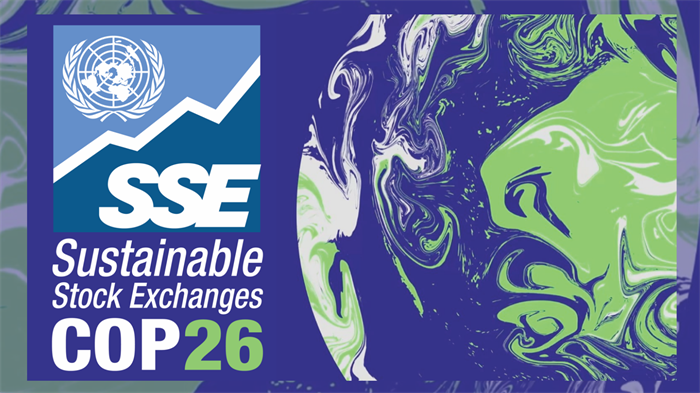
Market leaders discuss at COP26 in Glasgow how stock exchanges can play a role in moving the ESG agenda forward for issuers and countries
by Jeremy Grant, guest contributor
The world of financial services is known for generating big numbers. And at the COP26 climate summit in Glasgow, Scotland, there were plenty of those, including an announcement by the Glasgow Financial Alliance for Net Zero (GFANZ) that as much as $130 trillion of private capital had been committed by group’s members to transforming the economy for net zero.
Mark Carney, UN Special Envoy for Climate Action and Finance and the leader of GFANZ, said that with these commitments, “the architecture of the global financial system has been transformed to deliver net zero”. Watch the SSE TV interview with Mark Carney.
Stock exchanges are actively engaged with that architecture and are rapidly accelerating the scope and depth of their activities around sustainability, as audiences present at COP26, and online, heard from two panels organised by the UN Sustainable Stock Exchanges Initiative (UN SSE) and hosted by The United Nations Framework Convention on Climate Change (UNFCCC) on November 3 — designated COP26 Finance Day. The sessions were Role of exchanges in promoting innovative climate solutions: financing, standards, and education and CEO Roundtable: Race to Zero – How stock exchanges can tackle the climate crisis.
In the two sessions, covering the critical role of stock exchanges in tackling the climate crisis, as well as the innovations they coming up with in order to do so, senior representatives from the London Stock Exchange Group (LSEG), Singapore Exchange (SGX), Luxembourg Exchange (LuxSE), Mexican Stock Exchange (BMV Mexico) and the Johannesburg Stock Exchange (JSE) highlighted initiatives from their markets and explained why they are supporting GFANZ, a global coalition of leading financial institutions committed to net zero financed emissions by 2050.
While exchanges have long been known for their role in bringing together buyers and sellers in the capital markets and as platforms on which companies raise funds from investors, they are increasingly using their convening power to move the sustainability agenda forward. On the same day that GFANZ made its announcement the organisation admitted six UN SSE member exchanges: LSEG, SGX, LuxSE, BMV Mexico the JSE and Hong Kong Exchanges & Clearing (HKEx).
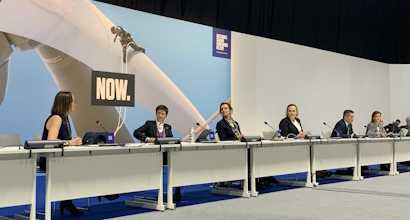
“As stock exchanges we are convenors of capital, and so we have a duty to act,” Julia Hoggett, chief executive of the London Stock Exchange, told one of the sessions, billed as a CEO Roundtable on how exchanges can tackle the climate crisis by engaging with environmental, social and governance (ESG) priorities.
She explained that with this unique convening power in the markets came a responsibility to play a role in financing the just transition to a low carbon economy. “To me it’s absolutely fundamental and it’s also about a different transition, it’s about a transition to ESG as ‘business as usual’,” Hoggett said.
Moving from an internal to an external focus
Some years back, exchanges’ efforts on decarbonisation focused initially on their own carbon footprint. And it continues: Japan Exchange Group (JPX) is studying ways to source the electricity used for its headquarters and data centres from renewable sources. But the sector’s efforts have since broadened out to helping listed companies understand and make appropriate disclosures on their climate impact, including on their emissions and those in their supply chains.
“When we first started looking at net zero, we were focusing on our own emissions. But we quickly realised that our biggest impact was in driving market decarbonisation,” says David Harris, LSEG’s Global Head of Sustainability Finance, Data and Analytics. “It’s about how we can accelerate market-based decarbonisation.”
Exchanges can help this acceleration by providing guidance and training to their issuers on ESG disclosures, as well as supporting stronger listing requirements that ensure companies provide the best possible disclosures in the interest of creating momentum for more sustainable business practices.
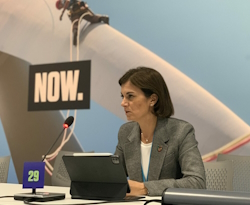
A key resource for exchanges as they move in this direction is the SSE’s “Model Guidance,” first published in 2015. This is a voluntary template for how exchanges can approach ESG reporting and disclosure in relation to their issuers. By this year, 61 of the 114 stock exchanges that the SSE tracks — or 53 per cent of the total — had published reporting guidance for their listed companies, using the Model Guidance in some form.
Julie Becker, Chief Executive of LuxSE, said exchanges were “extremely powerful” in their ability to make access to capital — specifically listings — in part conditional on companies producing “a credible and complete ESG profile and sustainability strategy”. At the same time exchanges needed to engage with market participants in helping them understand “the role they play in the transition”, as well as “supporting them in accelerating their own transition to a more sustainable model”.
That echoed a comment by Shameela Soobramoney, Chief Sustainability Officer, JSE, who on an earlier panel on climate innovation summarised exchanges’ role as “to create an enabling environment through disclosures, products and services, and using our convening power”.
The importance of convening power

This convening power is particularly relevant in markets heavily populated by smaller companies that may not have access to the resources needed to build and apply ESG policies and procedures in the way that larger companies might. “We have a lot of small- and mid-cap companies and they don’t know how to analyse and disclose ESG factors, so we educate them,” explained Hideki Tomita, Chief Representative in Europe for JPX.
Convening power is also important when it comes to dealing with ESG disclosures in hard-to-abate sectors including energy, the audience heard. LSEG’s Harris pointed out that with emissions still projected to rise by 2030, the challenge is to incentivise companies in high-carbon industries to set credible transition plans. “We should be supporting them but we also need to make sure they come up with credible plans and that the finance and investment follows when they have these plans. There’s a degree of ‘tough love’.”
In general, however, there was recognition that exchanges must tread a path between pushing greater adoption of sustainability disclosures and reporting and taking account of different levels of awareness and education on the part of issuers.
“We really need to adapt to continue to be relevant for the market,” said Chiara Caprioli, Senior Business Development Manager, Sustainable Finance, at LuxSE. “The challenge for all of the exchanges is to strike the right balance between placing the bar higher in terms of encouraging disclosure and measurability but at the same time respecting the level of preparedness of the market and of companies that list their securities on an exchange. That’s the difficulty, especially in terms of the listing requirements which are of course more stringent on the green segments of exchanges.”
Yet part of that balance inevitably involves being bold and demonstrating leadership, by identifying where sustainability disclosures and regulatory developments are heading, and then pro-actively creating an enabling environment for issuers.
Soobramoney of the JSE explained that when the exchange created its framework for green bonds, social bonds and sustainability bonds there was some uncertainty internally about the extent to which the market needed this, coupled with the question: “If we build it, will they come?”.
“In the end it was a combination of the two,” she said. “There was certainly a bit of boldness and leadership that was required — and it’s panned out well. It’s been illuminating to listen to our companies about the challenges they are facing. On the one hand, you have very advanced issuers who are up the curve and among the best disclosers and reporters in the world, and then there are others that are starting the journey and their first question is: ‘what is sustainability?’”
“And so, how do we support that? We’ve had to have an element of responsiveness to where our companies are at, and an element of [identifying] what is next and then saying ‘this is where it’s actually going’, and then creating the enabling environment. Companies might not actually see it right now, but investors are asking for it and policy is changing rapidly. The market therefore sees us as a credible source of information, so our view is, ‘let’s be that source and do it the right way’,” Soobramoney explained.
Tackling data and disclosure
Above all, arguably, the market needs the right data. Yet data and disclosure are barriers here, explained LSEG’s Harris, because the finance and investment community “don’t have good enough data to go on”, even as standard setters including the Task Force on Climate Related Disclosures (TCFD) and International Sustainability Standards Board (ISSB), are doing vital work. “If exchanges can all work together to drive consistent data … we don’t have to wait until [standards are completed],” Harris said. “We can be going with what we’ve got today. Data and disclosure are really important and exchanges have a huge role to play.”
Becker of LuxSE emphasized this point: “Our role is to make sure that decision-useful information is not only available but usable to investors, which means we have a role to play in structuring and formatting data and making it comparable from one instrument to another. It’s also extremely important to work on the knowledge gap and bring clarity to investors on the ‘alphabet soup’ of [sustainability] abbreviations that’s so complicated for a non-expert in sustainable finance. It’s extremely confusing and we should try to make it simple and accessible.”
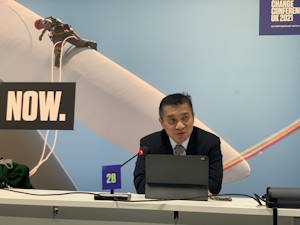
In Singapore, SGX is contributing to this effort by creating an ESG data portal through which issuers can make their sustainability disclosures, SGX Chief Executive Loh Boon Chye explained. “This is to create a platform that issuers can efficiently manage and make their sustainability disclosures so that they could make possible benchmarking, making it that little bit more transparent, and as a consequence, for investors, lowering the friction that they currently face,” he told the CEO Roundtable.
SGX developed this after studying four years’ worth of data submitted by issuers in the last four years of mandatory sustainability reporting and identified potential gaps in terms of lack of comparability and accuracy, explained Herry Cho, the exchange’s Head of Sustainability and Sustainable Finance. “On the back of that analysis we [looked into] how we [could] launch a data platform to make it easier for companies to report on a standardised, financially material set of indicators,” she said, adding that, ultimately, making this machine-readable would need to be a next step. “In the future the problem is going to be too much data, so how do you help all the stakeholders find the right information that’s material?”
Exchanges could also be helpful as “an interlocutor” between investors and the finance community on the one hand, and companies on the other, to drive meaningful action on ESG, according to LSEG’s Harris. For example, they could help improve companies’ understanding of how ESG information affects investment flows, while helping educate the finance community about companies’ approaches and challenges.
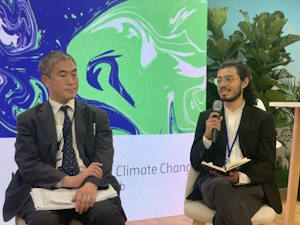
Finally, there is capacity-building. David Colín is chief operating officer at MexiCO2, a voluntary carbon credit exchange set up by BMV Mexico in 2013 with assistance from the UN Environment Programme (UNEP) and the UK Government. He said the Mexican exchange is supporting large emitters and small organisations by providing tools to measure their carbon footprint. “One of our main objectives is to keep building capacity, and to be as an example for other actors, which is why we have been developing climate strategies to measure, reduce and offset carbon footprints and also to innovate in financial instruments beyond green and sustainable bonds so we can allow all market participants to achieve their climate goals,” he told the audience.
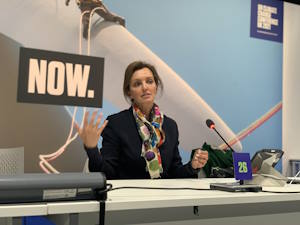
With part of that capacity-building increasingly involving use of the SSE’s Model Guidance, Leila Fourie, JSE Chief Executive, highlighted an announcement by her exchange that day (November 3) that it was in advanced stages of developing a guidance document for listed companies on climate risk disclosure premised on the TCFD framework and based on the SSE’s Climate Disclosure Model Guidance, which was issued in June this year. The document would be accompanied by broader sustainability disclosure guidance which will assist the market in integrating ESG factors into disclosures and investment decision making, “with due consideration for the relevance to the local context”, according to the JSE.
Local context and developing country priorities
Local context was a topic that Fourie said needed significant focus as exchanges consider the broader picture of how to apply ESG factors in the context of issuers and exchanges in developing economies and markets. In South Africa, for example, social issues are seen as just as important as environmental issues and with climate change set to exacerbate these social challenges, the topic needed to be considered holistically.
“Each country and even different sectors have different challenges that they need to address. In South Africa, like many emerging markets, the dynamic in play is a very delicate balance between climate funding and social requirements. In the industries which are carbon-intensive, such as coal, most of the emerging markets are highly reliant on those industries and most of the capital investment into those industries in developing countries is still nascent, while most of the developed world investment into capital intensive industries is coming to the end of its life.
“The potential for economic dislocation and the effect of a ‘sudden stop’ on climate finance on developing world economies cannot be ignored. We need a smoother glidepath and we need cognisance to be taken of the social impact and ensure that the just transition brings everyone along with it,” Fourie told the CEO Roundtable.
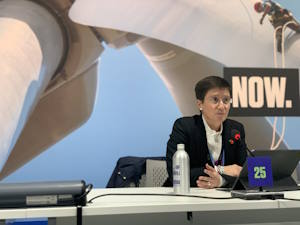
In the context of emerging markets, Becker of LuxSE said an important role for exchanges is in channelling capital flows towards developing countries, which are “the ones that have done the least to cause climate change but which will suffer the most”. At the same time, she said, climate- and ESG-related disclosure needed to be more standardised and unified across the world. “At the moment, it’s extremely fragmented, and exchanges, particularly in the developed world, have an important role to play collectively to improve outcomes.”
Participants acknowledged that much had been accomplished but that there was much more to do — much of it involving overcoming significant challenges. But there was a unanimous view that exchanges can and must step up.
“This is hard, complicated stuff and we’re allowed to say that it is. We are going to have complex conversations between asset owners and issuers about targets and progress,” the LSE’s Hoggett said. “But we need to embrace that complexity.”
Photo Gallery
Role of exchanges in promoting innovative climate solutions: financing, standards, and education
Role of exchanges in promoting innovative climate solutions: financing, standards, and education
